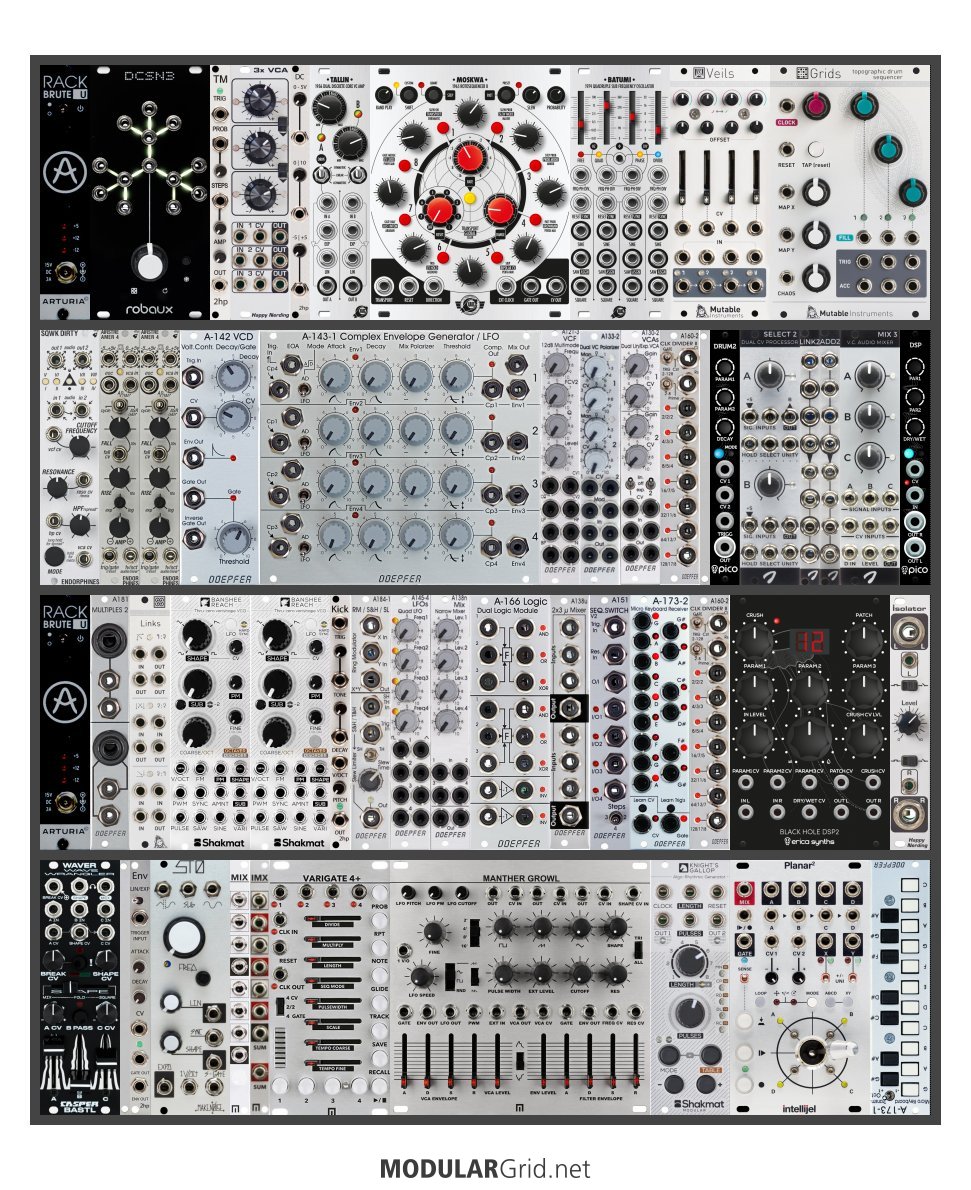And I'm not even kidding. I've spent 5 years slowly upgrading from a single Rackbrute 3U to dual Rackbrute 6Us, and gradually all aspects were refined and eventually cemented into a complete system that I'm incredibly happy with. All my modules perfectly complement each other and they are arranged in an ergonomic, functional, logical and visually pleasing way. All the patch points are grouped together in logical places, and all the controls are exactly where I want them. Modules of the same manufacturer are clustered together, but only if it makes sense functionally. Cable length is minimized for patches I use often, and I can usually get by with using only 15cm and 30cm cables. I have experimented with all kinds of layouts and this one is by far the best one I've come up with.
It took me a long time to finally come up with a bass/kick drum sound that I liked. First, I used an external drum machine (DrumBrute), but when I discovered I could produce a much more pleasing drum using the STO and Maths envelopes I decided to get rid of it and go fully modular. However, the patch took up all of Maths, the STO, and my favorite VCA (Xaoc Devices Tallin) so I decided to replace all of this with a 2HP kick. Unfortunately, I did not like the sound at all; way to "clicky" for me. For a long time, I continued to use various patches to create my own kick drum but finally decided to buy a Vermona Kick Lancet. It was exactly the sound I was looking for! Together with the Vermona Retroverb Lancet they fit perfectly in the empty space inside the hinge of the two Rackbrutes. You should see it, it's really quite wonderful.
And now, my desk is full. There is no space to reasonably fit any more synth gear, and I have no desire to add anything anyway. I love the endless possibilities and the raunchy analog sound of my setup, and it will remain in this exact configuration for decades to come.
Here is a picture of the rack in real life:

You can listen to my music (freely!) on https://www.splendor.wtf/


